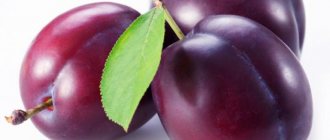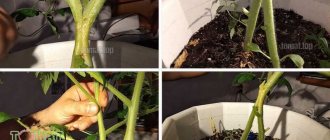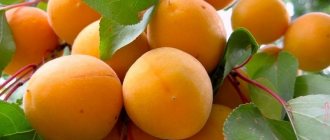Bridge grafting of trees is necessary when the tree is severely damaged. This is the only way to save a dying plant. You should first learn everything about apple tree grafting. Only a correctly carried out procedure will give the desired result. Treatment is usually required after rodent damage to the tree. Without repair, essential nutrients cannot pass through the damaged central trunk. Bridge grafting is usually carried out in the spring, when sap flow has not yet begun.
In what cases is it recommended to graft an apple tree with a bridge?
Bridge grafting is not a standard procedure. It does not change the varietal characteristics of the tree. In essence, this is a rescue measure that involves attaching a scion bandage to the trunk. The cuttings form a bridge between two sections of bark. The scion acts as a channel that distils sap from the root system of the entire above-ground part of the tree. Damage to the bark can be different: eating by hares, sun or chemical burn, freezing. It is important to consider the degree. If the bark is partially damaged, the fruit tree can survive. The crown will be able to receive nutrients from the root. With ring damage, the trunk is completely exposed. If you do not vaccinate in a timely manner, the crown will dry out.
The rescue procedure has 4 types. The following is used as a scion:
- cuttings;
- shoots from the trunk located below the damaged ring;
- young growth from the root;
- pieces of young bark;
- root sections.
You can do without vaccination if the bark is partially damaged. The wound is disinfected with Bordeaux mixture, lubricated with garden varnish, and wrapped with film or cloth. Over time, the apple tree will recover on its own.
Advice! If hares have heavily gnawed the bark along with the wood, starting from the ground to a height of more than 50 cm, then the chances of saving such a tree are minimal.
Pros and cons of bridge grafting
The bridge is most often used to save apple and pear trees. If you try hard, the graft will take root on other fruit trees, for example, plums. The bridge has an undeniable advantage. Grafting is the only way to save an apple tree with ring damage to the bark.
Against the backdrop of the significant advantages of the bridge, the disadvantages fade into the background, but they exist in much greater quantities:
- difficulty in performing vaccinations;
- impossibility of installing a bridge on a barrel less than 35 mm thick.
When ring damage is detected, the first step is to carefully inspect the barrel. If the cambium is preserved, the wound is wrapped with strips of cloth soaked in garden varnish. Over the summer, the tree will restore its bark on its own.
Preparation for vaccination
If damage to the bark is detected, you cannot delay with preparatory measures for vaccination. Before the onset of warm weather, the gardener must have tools, consumables and grafting ready.
Tools and materials
List of everything needed for vaccination:
- grafting garden knife;
- pruner;
- garden saw;
- winding material for bandages;
- putty in the form of garden varnish or other similar paste.
When grafting with a bridge, it is allowed to attach the scion to the trunk with small nails. If this method is chosen, a hammer must be included in the list of tools.
At the time of grafting, the pruning shears, saw, and knife must be sharpened. The instrument is disinfected by wiping with alcohol or copper sulfate.
An important procedure for grafting is the correct fixation of cuttings. The scion is tied with twine, strips cut from film or special garden tapes. It is permissible to use insulating tape used by electricians when insulating wires. Scotch tape is not suitable for wrapping the vaccine. The best winding material is considered to be a cotton strip of fabric impregnated with garden varnish. It is used for the primary internal strapping, and layers of bandages are wound on top.
Important! Experienced gardeners do not recognize fastening the scion with nails. Additional injury is caused to the tree. In addition, nails split thin cuttings. However, a method of fastening exists and is subject to consideration
.
How to prepare a scion
The preparation of material for grafting is usually done in the fall after the leaves have fallen. However, the bridge is a forced and unforeseen measure. A gardener cannot know whether hares will gnaw the bark on an apple tree in winter. For grafting, the scion is cut immediately before the start of the procedure - in the spring.
If cuttings are taken in the fall to propagate your favorite apple tree variety, then they can also be used for a bridge. The graft is stored in the cellar in winter, without allowing it to germinate. The branches are cut into pieces and placed in a box with moistened filler. Sand or sawdust is usually used.
Bridge scion is different from regular cuttings. The length of the branches should be 13 cm greater than the height of the ring damage to the apple tree bark. The thickness of the cuttings is selected according to the diameter of the trunk. Additionally, the area of damage is taken into account. If the height of the ring is up to 5 cm, a bridge is installed from twigs with a diameter of 4 mm. On an adult apple tree with large ring damage, grafting is done using cuttings of larger diameter.
The amount of scion for the bridge depends on the thickness of the trunk. A mature tree requires a minimum of 8 cuttings. For a young apple tree with a trunk thickness of 3 cm, a bridge is made of 2 branches. Another aspect of scion preparation depends on the specifics of the grafting. The cuttings used for the bridge should not leaf out. All buds are removed from the branch and new ones are not allowed to form.
Important! The scion can be used from a non-damaged apple tree. Cuttings will be suitable from another variety, game or even pear.
Preparation of the rootstock
The rootstock, which is the damaged trunk of the apple tree, is also prepared for grafting. Initially, the wound on the wood is treated with garden varnish. In this state the tree overwinters. In spring, garden varnish is washed off with a damp cloth. Using a sharply sharpened knife, cut the bark evenly along the ring from above and below the damaged area. The cut is made even but shallow to prevent cutting into the wood.
Regional characteristics of vaccination
The differences in the grafting procedure in the regions come down to the timing of its implementation, which directly depends on the climatic zone of growing the fruit crop.
On South
In the southern regions, the growing season is longer, so spring gardening work is permissible (starting in March), which continues in the summer, and in the fall the splicing period is extended until November.
Unlike northern climates, return frosts in southern areas have a more negative impact on the scion due to increased humidity.
The second stage of sap flow in the south begins in July and lasts a whole month. At this time, the highest air temperatures and lack of precipitation are observed. During this period, the hot climate will not allow crossbreeding.
In the middle lane
The optimal timing for the spring vaccination procedure in the regions of central Russia is the last days of April or the first half of May.
When planning summer plant crossings, it is better to choose the end of July. The autumn growing season, with the cessation of sap flow in these areas, ends by mid-September, so merging is carried out until the beginning of October.
In the north
In Siberia and other northern zones with a cold climate, the benchmark for carrying out activities in the spring is the condition of the soil: it is easy to dig to a depth of at least 2 shovels. The best time for the procedure in summer is early August. In the fall, due to early frosts in the northern regions, trees are not grown together, and all procedures are postponed until the winter.
Summary data by region is presented in the table.
| zone | spring | summer | autumn | winter |
| south | March | July | End of october | all period |
| middle lane | end of April | end of July | end of September or beginning of October | all period |
| north | early May | August | — | all period |
How to properly graft an apple tree with a bridge
Grafting begins with saving the rootstock. If damage to the bark is detected, the wound on the trunk is covered with garden varnish. The treatment will save the tree from drying out. The apple tree will stand until sap flows in the spring.
Procedure
Grafting begins with the selection of the required number of cuttings. Branches are selected that are suitable in length. If the scion was prepared in the fall and stored in the cold, before grafting it is warmed up inside a warm room.
Attention! Branches for grafting using the bridge method must have good flexibility.
All buds are removed from the scion. At the ends, corner cuts about 3 cm long are made with a knife. At the time of grafting, the rootstock must be prepared. 1 cm is retreated from the evenly cut edge along the bark ring. Using a knife, cut pockets for cuttings in the shape of the letter “T”.
Important! Before grafting, the cuttings must be correctly laid out in the direction of growth of the branches. If the scion is inserted upside down, the bridge will not take root on the apple tree.
How to properly attach a scion to a rootstock
The cuts on the bark in the shape of the letter “T” should be exactly opposite each other. This is an important condition for the formation of a bridge. Use the tip of a knife to turn away the bark on opposite cuts. The cutting is inserted into the pockets, pressing the oblique cut against the wood. After insertion, the scion should arch slightly. In this state, it is fixed to the trunk with twine or strips of fabric soaked in garden varnish. Another strip is wound on top. When the bridge is assembled from all the cuttings, the graft is tied with a washcloth. All remaining bare areas of the trunk are covered with garden pitch.
Important! If nails are chosen for fixation, then the cuttings in the area of the T-shaped cuts are nailed to the wood. No fixing tape is needed. The graft is only wrapped in cloth, sponge, and smeared with garden varnish.
Dates by season
Apple tree grafting is carried out at any time of the year, but each season has its own characteristics. When garden crops are grown without following the basic rules and at the wrong time, the cutting does not take root or the grafted plant begins to hurt and may die.
A scion is a shoot that is crossed with a rootstock.
in spring
The optimal time for carrying out spring grafting work is the period when sap flow begins. This process occurs when the apple tree is dormant and its buds have not yet woken up after winter. The main forces of the tree at this stage are directed to maintaining life. The activation of vegetation is determined by a number of signs:
- the buds swell, but do not grow yet;
- the branches turn red;
- As a result of mechanical action on the bark, it separates, revealing the cambium - green plant tissue.
The exact time for spring grafting of apple trees depends on regional climatic conditions and is between the end of March and the beginning of April. When the procedure is performed later, the grafted shoot is most often rejected.
In summer
Most gardeners are inclined to believe that summer is not the best time for splicing, because... Often during this period the branches do not take root well and the procedure adversely affects the health of the apple tree.
Vaccination in summer requires a more careful approach and is possible when:
- apples are poured;
- the shoots have an apical bud;
- the bark is easily separated from the tree;
- the number of internodes on annual shoots in the upper part decreased.
The best time for summer vaccinations is the end of July-August.
in autumn
Splicing in the fall is not suitable for all areas. This time of year is often not suitable for splicing due to early frosts.
When it was not possible to vaccinate in spring or summer for some reason, it can only be done at the very beginning of autumn: in the first half of September in the northern regions, until mid-October in areas with warm winters and late frosts.
in winter
In winter, the tree is grafted, carrying out all activities in warm indoor conditions. For the winter procedure, you will need to prepare in advance rootstocks from annual or biennial trees, which are harvested in late autumn and stored in a warm, frost-free room.
For the winter procedure, shoots with 2-4 buds are selected and prepared at the beginning of the season.
The blanks are brought into the heat for 7 days and 2-3 days, respectively. Winter grafting is carried out in the first half of December so that the spliced seedlings can be planted in the spring (in March). The grafted planting material is stored indoors at a temperature of 0 to 4 °C.
Follow-up care for grafted apple trees
The main requirement for caring for the graft is to remove the buds that form from the bridge branches. They shouldn't germinate in the summer. The crown of the apple tree is cut by 1/3. This forced measure will save moisture consumption by the green mass while the grafting bridge takes root. A young apple tree with a thin trunk must be tied to a stable support. If the tree bends from the wind, the bridge will be broken, the cuttings will come out of the pockets, and the graft will not take root.
For intensive sap flow, the apple tree requires frequent watering. Phosphorus and potassium are added as fertilizers. In September, the soil under the apple tree is dug up to a depth of 50 cm. The digging area is equal to the diameter of the crown. In autumn, apple trees up to 12 years old are fed with 130 g of superphosphate and 40 g of potassium chloride. For an old tree with a bridge graft, the dose of fertilizer is increased by 20 g.
The graft is observed until it grows together. All this time, the bridge should be generously lubricated with garden pitch. To avoid drying by the sun, the graft on the apple tree is additionally wrapped with birch bark or pieces of film.
Tumanov method
For merging seedlings using the Tumanov method, the place is chosen not at the end, but closer to the point of connection of the skeletal branches. This allows you to avoid subsequent breakage of the new process.
Using a knife, clean the cuts in a circular motion so that the fresh surface becomes smooth and clean.
Expert A. Tumanov prefers to take seedlings of the Antonovka variety grown from apple seeds as a rootstock, and for columnar ones - ordinary wildflower.
The gardener uses 2 popular methods:
- into the split - with this method, space for implantation is made by installing a knife and pressing it into the wood by rocking, rather than pressing;
- behind the bark - suitable for thicker branches.
A wedge is formed from the workpiece and inserted into the split from the edge, and not in the middle of the cut, because You need to connect the cambium on the branch and on the pin, located immediately under the bark layer.
All manipulations, according to Tumanov, must be done quickly (in 2 minutes) so that the plant juice does not oxidize. Otherwise, the cutting will not take root.
The established scion is cut into 2-3 buds. A similar procedure is carried out with the second workpiece, which is inserted from the other edge of the cut. The split is wrapped with electrical tape. The area at the end of the split below the electrical tape, the cut itself and the ends of the cuttings are covered with garden pitch.






